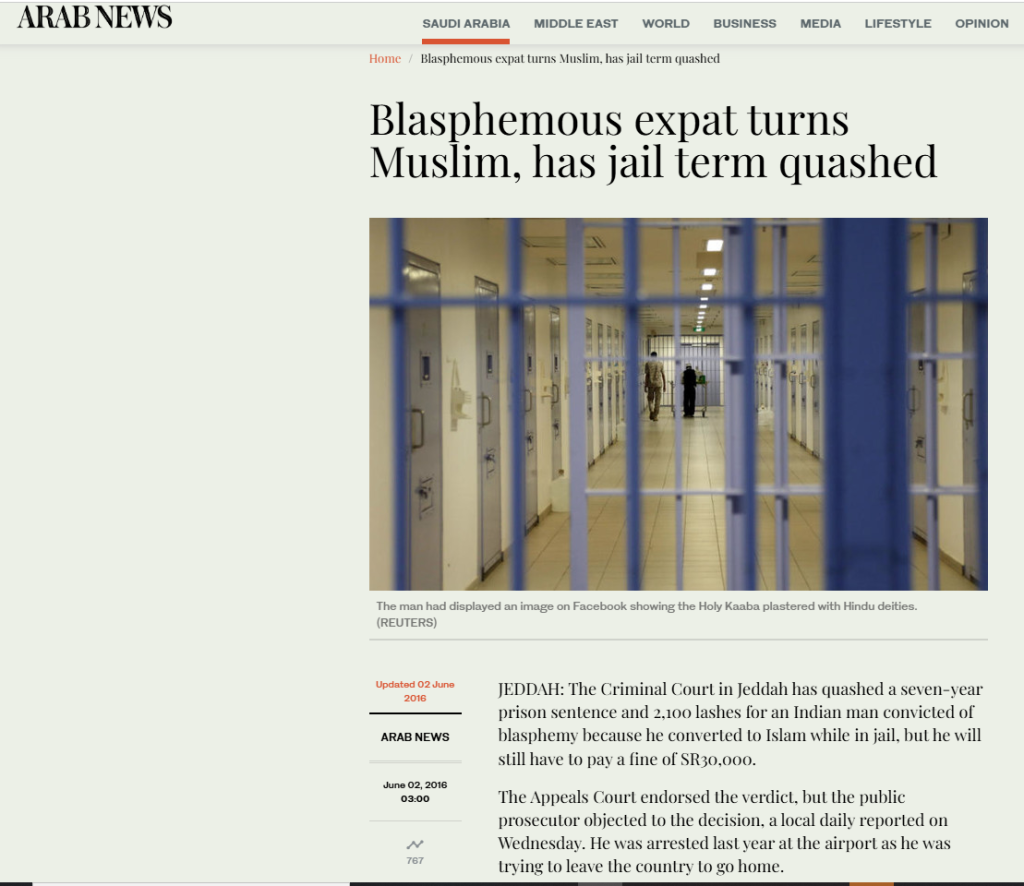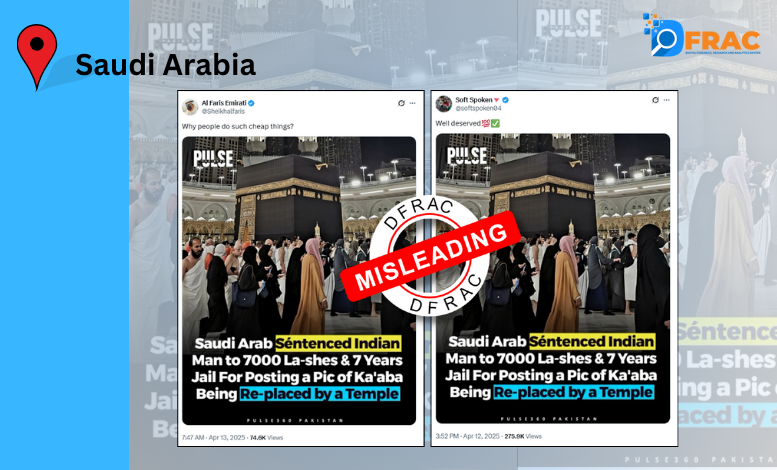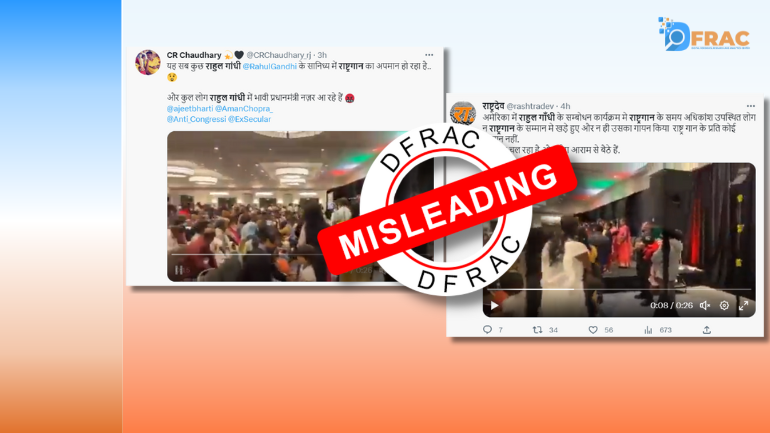A widely shared post asserts that in 2025, Saudi Arabia authorities sentenced an Indian man to 7,000 lashes and seven years in prison for posting on Facebook an image showing the Kaʿaba replaced by a temple.
A social media user named AL Faris Emirati shared the infographic with the logo of Pulse 360 Pakistan, and he captioned the infographic as, “ why do people do such cheap things?”.
Other users were also found sharing a similar claim recently, which you can view here, here, and here.
Fact Check
Upon investigation, the viral claim was found to be misleading.
We began our verification process by searching for keywords such as “Kaʿaba temple photo arrest Saudi Arabia “ and “Indian man Jeddah Facebook image blasphemy.” These searches quickly led us to a news report published by Al Arabiya on 4 March 2015, which confirmed the arrest of an Indian expatriate at Jeddah airport for sharing a doctored image showing the Kaʿaba replaced with a Hindu temple.

Shortly after, we found corroborating coverage from the NDTV dated 5 March 2015, which verified the arrest and cited violations of Saudi Arabia’s cybercrime laws. These early reports made it clear that the man had allegedly clicked “Like” on the controversial image, which then appeared on his Facebook timeline—an act that triggered the legal action.

To uncover the legal outcome, we refined our search using terms like “Jeddah Criminal Court sentence Indian Kaʿaba photo”. This led us to a follow-up report by Arab News, published on 2 June 2016. According to this report, the Jeddah Criminal Court initially sentenced the Indian national to seven years in prison, 2,100 lashes, and a SR 30,000 fine on charges of blasphemy. However, after the man converted to Islam, the appeals court quashed both the prison sentence and the flogging, leaving only the monetary fine in place.

Years later, on 26 January 2020, the Islamic Information website republished details of the original case, accurately noting the original punishment of 2,100 lashes. Crucially, this article made no mention of 7,000 lashes—a figure that has recently gone viral online without basis in fact.
It’s important to note that recent social media posts have misleadingly shared, inflating the lashes from 2,100 to 7,000 and falsely suggesting that this is a new or ongoing incident in 2025. In reality, the case was legally concluded in 2016.
Finally, we conducted an extensive search across trusted international news agencies and found no credible reports of any new sentencing or developments related to this case since 2016. This confirms that the only active penalty remaining from the case is the SR 30,000 fine, while all corporal and custodial punishments were officially annulled years ago.
Conclusion
The viral claim is a misleading distortion of a 2015–2016 case. It inflates the number of lashes from 2,100 to 7,000, ignores the appeals‑court quashing of all but the fine, and falsely presents this as a current event. There is no evidence of any new sentencing matching the viral figures.






